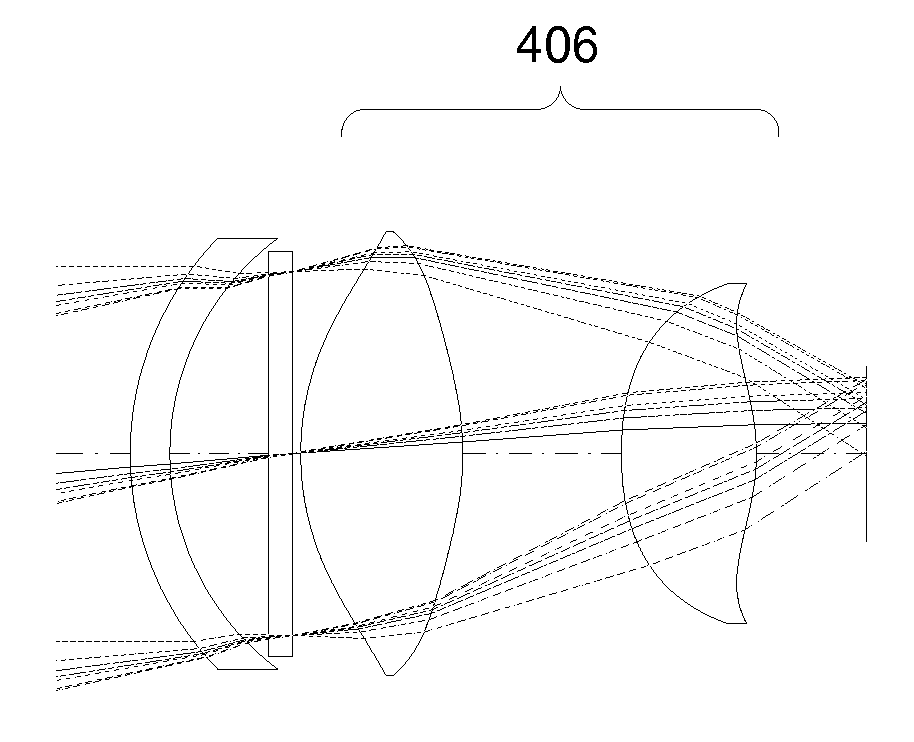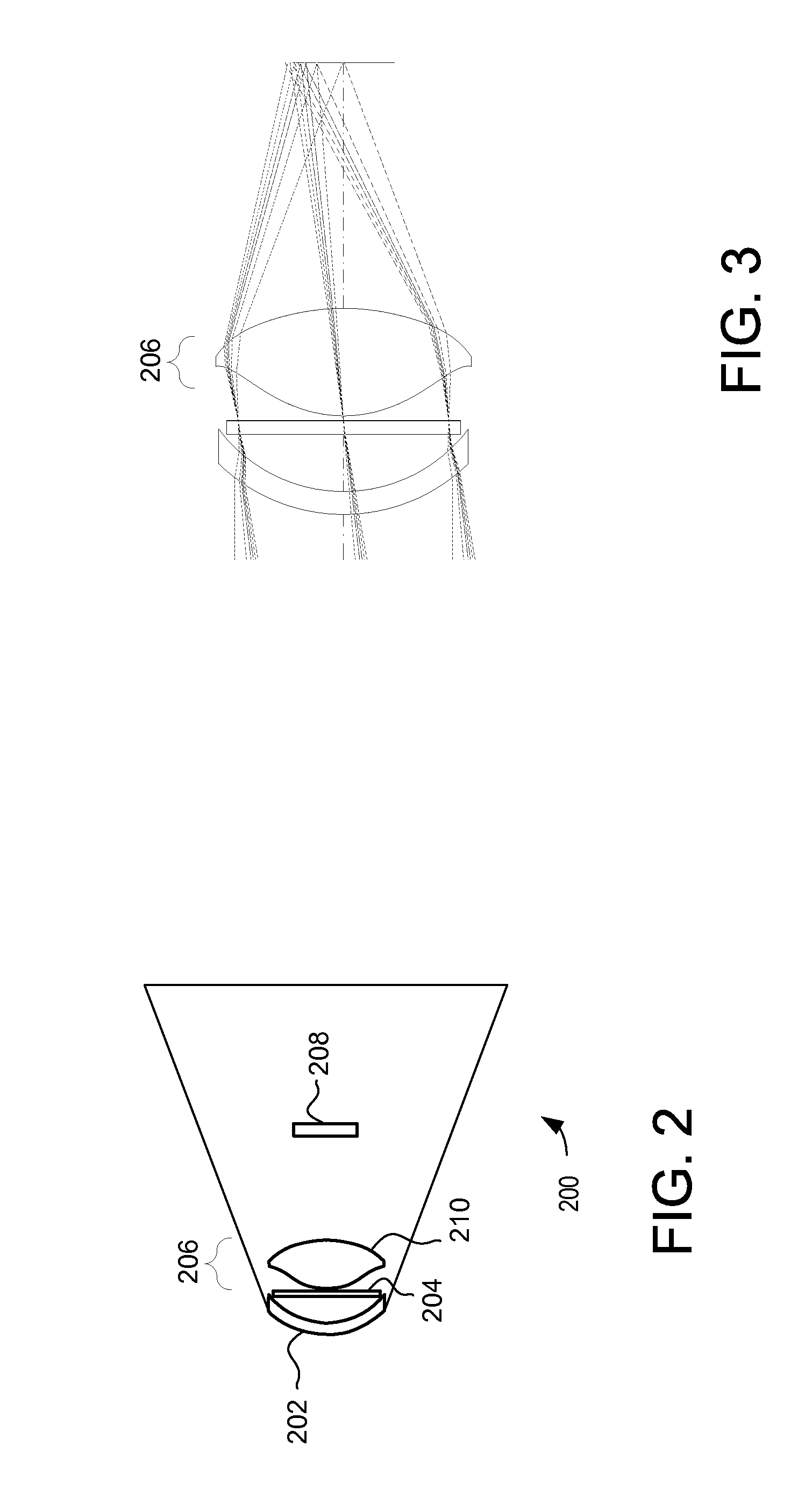Lens concentrator system for semi-active laser target designation
- Summary
- Abstract
- Description
- Claims
- Application Information
AI Technical Summary
Benefits of technology
Problems solved by technology
Method used
Image
Examples
Embodiment Construction
[0016]A semi-active laser (SAL) sensing system is provided that uses a lens concentrator system to pass received reflected laser light from an aperture to a detector. The lens concentrator system facilitates the use of SAL systems with different laser designator wavelengths to improve the performance of the SAL system.
[0017]In one embodiment, the lens concentrator system is formed from an amorphous fluoropolymer having optical clarity for electromagnetic radiation in a first wavelength range. The amorphous fluoropolymer lens concentrator system facilitates the use SAL designators using different wavelengths than those in past SAL sensing systems. For example, the use of amorphous fluoropolymer in a lens concentrator system facilitates the use of lasers in SAL designators that are not detectable with detectors that are readily available to the general public, or in some countries due to export controls.
[0018]When properly configured, the amorphous fluoropolymer lens concentrator syst...
PUM
| Property | Measurement | Unit |
|---|---|---|
| Length | aaaaa | aaaaa |
| Length | aaaaa | aaaaa |
| Wavelength | aaaaa | aaaaa |
Abstract
Description
Claims
Application Information
 Login to View More
Login to View More - R&D
- Intellectual Property
- Life Sciences
- Materials
- Tech Scout
- Unparalleled Data Quality
- Higher Quality Content
- 60% Fewer Hallucinations
Browse by: Latest US Patents, China's latest patents, Technical Efficacy Thesaurus, Application Domain, Technology Topic, Popular Technical Reports.
© 2025 PatSnap. All rights reserved.Legal|Privacy policy|Modern Slavery Act Transparency Statement|Sitemap|About US| Contact US: help@patsnap.com



